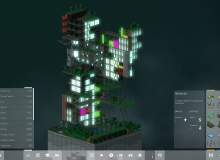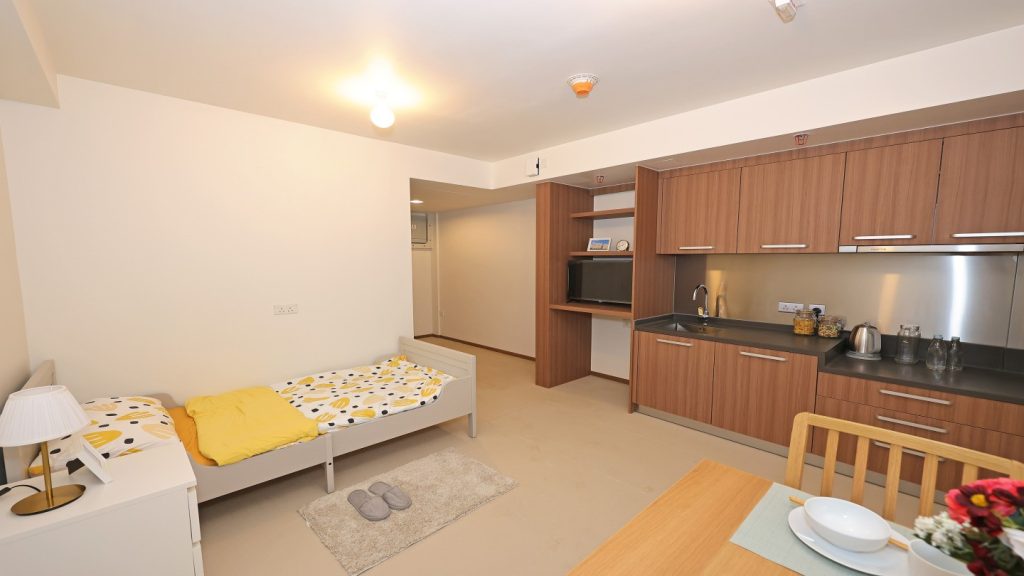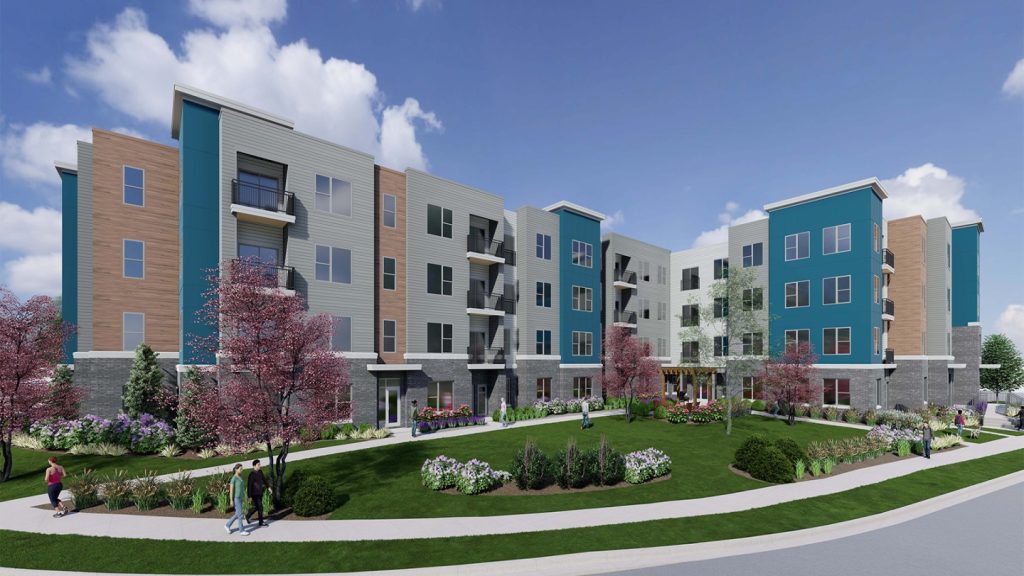

There has always been a link, however unlikely or unrecognised, between videogames and architecture. It’s no accident of semantics that real-world structures and virtual experiences are both considered within the preserve of design; whether it’s Pac-Man chomping his way through the corridors of a game screen, the jigsaw dynamics of a game of Tetris or the stunningly-rendered 3D environments presented by the blockbusters of today, games and architecture share a fundamental concern – space, and how best to use it.
But as time and technology have progressed over the last few decades and 3D computer-aided design (CAD) models become increasingly commonplace, the boundaries between real-life design work and its fanciful videogame counterpart has become blurred. In particular, the 2011 release of sandbox construction game Minecraft – which remains immensely popular today – makes explicit the links between virtual and real-world design. Five years on from the game’s initial release, it almost certainly won’t be long before the first crop of young architects emerges for whom the created worlds of Minecraft were the gateway to a wider passion for architecture.
In many ways, this process has already begun. As new generations grow up immersed in videogame culture and begin to take advanced rendering technologies and photorealistic graphics for granted, the links between the two mediums appear stronger than ever.
Architects explore digital realms
The increasing cross-pollination between gaming and design is exemplified by Jose Sanchez, a Los Angeles-based hybrid architect and game developer who set up his studio, Plethora Project, to explore the relation between the two forms. In 2016 the studio released Block’hood, a community design simulation that challenges players to create a sustainable neighbourhood from blocks that each have their own needs.
See Also:
In the process, Sanchez told Dezeen in March 2016, the game can help gamers and designers explore the field of design as a means of managing a built eco-system that houses interdependent components, a point of view that isn’t often found in the traditional design process.
How well do you really know your competitors?
Access the most comprehensive Company Profiles on the market, powered by GlobalData. Save hours of research. Gain competitive edge.

Thank you!
Your download email will arrive shortly
Not ready to buy yet? Download a free sample
We are confident about the unique quality of our Company Profiles. However, we want you to make the most beneficial decision for your business, so we offer a free sample that you can download by submitting the below form
By GlobalData"Architects today start designing by thinking of form either through drawings or models," Sanchez said. "We don’t often start from a study of ecological dependencies. Block’hood allows to do both simultaneously, understand how form and ecology are interrelated."
While evangelists like Sanchez continue to argue the case that games can "engage a global audience in the problems that architecture is facing", other design firms are dipping their toes into the digital realm to find out how real-world design expertise can improve the gaming experience.
For exploration-focussed puzzle game The Witness, game developer Jonathan Blow wanted to embed a sense of history into the landscape and buildings of the mysterious island that provides the game’s settings. He hired design firm FOURM and landscape architect David Fletcher Studio to help achieve this vision of a background narrative communicated via structures and natural features, and found that the studios’ input added a sense of detail and thoughtfulness that had been missing before.
"If you have an eye for detail, you may notice the elements of modern construction shoring up the design of an older structure with a different purpose," said Blow in 2011 blog post, while development on the game was still ongoing.
"Having smart architecture, it seems, really helps this process work, brings it alive. If you build a game where people are supposed to pay attention to details, but the details are wrong or naive or just don’t have much thought put into them, then at some level the game just won’t work."
A new frontier in visualisation
Visualisation is another sphere in which videogames and architecture are starting to collide with ever-greater frequency. For the design industry’s ‘paper architects’, who create sometimes outlandish theoretical or speculative designs that aren’t meant to be built, 2D drawings are increasingly being replaced by lavish three-dimensional renders that are sometimes directly based on the graphics engines that drive modern videogames.
Through his popular community blog, Israel-based architectural visualisation artist Ronen Bekerman has become something of a one-man hub for artists who skirt the borders between architecture and game design. In a 2015 interview with Gizmodo, Bekerman explained the appeal that games could hold for architects and design artists and noted that the two industries are increasingly drawing from the same labour pool.
"The gaming world, much like film, [allows] architects to be dreamers and get those dreams done without limits," Bekerman said. "I can see how this will attract more architects and architectural visualizers into the gaming world, leveraging their design skills in the process."
A recent example of this skills and technology overlap can be found in ‘The Vineyard’, Bekerman’s design competition in late 2015 that challenged entrants to submit a fully-rendered visualisation of a vineyard and winery using Unreal Engine 4, a modern gaming engine developed by Epic Games that is capable of producing highly-detailed imagery of both interior and exterior spaces.
The winning entry in the team category, designed by UK-based Factory Fifteen, presented a futuristic site with drone harvesting fields, an underground production facility and an inbuilt spa complex. "We have enjoyed the process of learning Unreal within this competition," said Factory Fifteen in an accompanying statement. "We see huge potential in it for architecture visualisation as well as interactive storytelling."
The potential for gaming technology in visualisation isn’t limited to theoretical designs. French design firm ENODO now has several years’ worth of experience working with another cutting-edge game engine, Crytek’s CryEngine 3, to visualise real-world designs for clients in a more detailed and true-to-life way than is possible in industry-standard 3D CAD visualisations. Real-time rendering also allows for a more experiential, eye-level view of a design, with the realistic interplay of light and materials adding to the effect.
"I saw a video made using the CryEngine Sandbox," said ENODO co-founder and passionate gamer Jean-Baptiste Reynes as part of a 2013 showcase by Crytek. "When they showed in the video how it was possible to create an environment in 3D and playtest it in real-time, and change it in real-time, I thought, ‘If I can use this tool for architectural projects in real-time, that would be really cool.’"
The company has used CryEngine technology to communicate its ideas to customers including BMW, Total and French telecoms company SFR. As ENODO has shown, there is little doubt that the detail and emotive quality that modern game engines can bring to architectural visualisation has the potential to transform the way in which design ideas are communicated now and in the future, especially as the associated costs continue to decline.
Gaming and architecture: a healthy relationship?
It’s clear that videogames and the technology behind them are enjoying a symbiotic relationship with the design world. But is this necessarily a good thing? Certainly there are benefits, but is there a risk that digital technologies will push the industry’s young torchbearers so far into the realms of the abstract that they lose sight of the principle that form follows function, and that architecture should be a problem-solving tool for communities and societies?
That was the opinion of British design critic Oliver Wainwright, who wrote a piece for The Guardian newspaper in 2013 arguing that excessively inward-facing architecture schools were driving students away from the design tenets that are necessary for actually making buildings work in the real world.
Describing his experience of sitting on judging panels for student projects, Wainwright wrote: "Time and again, the projects seemed intent on fleeing the real world of people and places, scale and context; retreating instead into fantasy realms of convoluted forms with no seeming purpose. There were scaleless worlds of splintered shards and riverine landscapes, in which forlorn mechanisms had been implanted like post-apocalyptic ruins of a distant-future race. Clouds of lines and layers were regularly employed as a smokescreen to disguise the fact that there wasn’t really an idea at all: visual complexity masking conceptual thinness."
Although the state of architectural education was Wainwright’s main target, he made an excellent point about the potential for technology to allow for an inordinately navel-gazing approach to design, especially among the millennial generation that represents the future of the building design industry. Theoretical visions of utopian vineyards are all well and good, but they don’t replace the urgent need for design-driven solutions to the very real problems that beset the towns and cities of today. It’s vital that the architecture field doesn’t disappear into fantasy.
However, it’s also important not to throw the baby out with the bathwater. Clearly game development and architecture, as two distinctly design-centric fields, have many more lessons to teach one another, and the likes of ENODO have already proven that these lessons can have important practical applications. The ‘paper architects’ may have leveraged gaming technology to make their abstract designs feel more real than ever before, while game developers are starting to make use of architectural skills to make their games more authentic and engaging, but that doesn’t mean that the gaming sphere can’t have a positive impact on the design of buildings and landscapes in the real world, as long as everyone is learning the right lessons.







